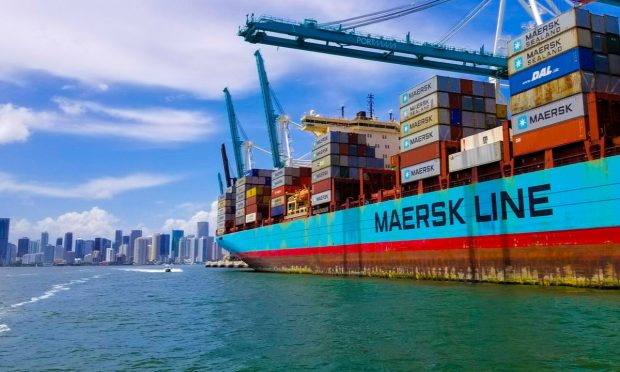Maersk Looks to Expand B2B Logistics Business

One of the world’s largest container shipping companies reportedly expects to be making more money from logistics than from shipping by the middle of the decade.
Maersk aims to become a giant in global logistics to mitigate the ups and downs of the container shipping business, the Wall Street Journal reported Wednesday (Nov. 2).
“Our strategy is not to gain market share in ocean,” Maersk CEO Soren Skou said Wednesday during the company’s quarterly earnings call. “It is to gain share in our customers’ wallet of logistics spend.”
Highlighting the benefits of pursuing that strategy, Maersk executives said during the call that the amount of money importers and exporters spend on trucking, warehousing, delivery and other domestic logistics add up to as much as nine times the amount they spend on international ocean freight.
At the same time, the demand for container shipping services has taken a nosedive after surging during the pandemic, according to the report.
Maersk officials said there was a 7.6% drop in cargo volumes during the most recent quarter, while online freight marketplace Freightos reported that it costs 85% less today than a year ago to ship a container from China to the West Coast of the United States, per the report.
As PYMNTS reported Wednesday, Skou said in a news release that the global shipping industry faces “dark clouds” even as Maersk reported record revenue.
Russia’s invasion of Ukraine, Europe’s energy crisis, continued high inflation and the threat of a worldwide recession are contributing to that dire outlook, Skou said in the release.
“This weighs on consumer purchasing power, which in turn impacts global transportation and logistics demand,” Skou said.
One move that Maersk made toward its greater focus on logistics was its acquisition of Hong Kong-based distribution firm LF Logistics.
When announcing the purchase in December, the company said the move would strengthen Maersk’s capabilities beyond ports, giving it reach into inland distribution and last-mile delivery.